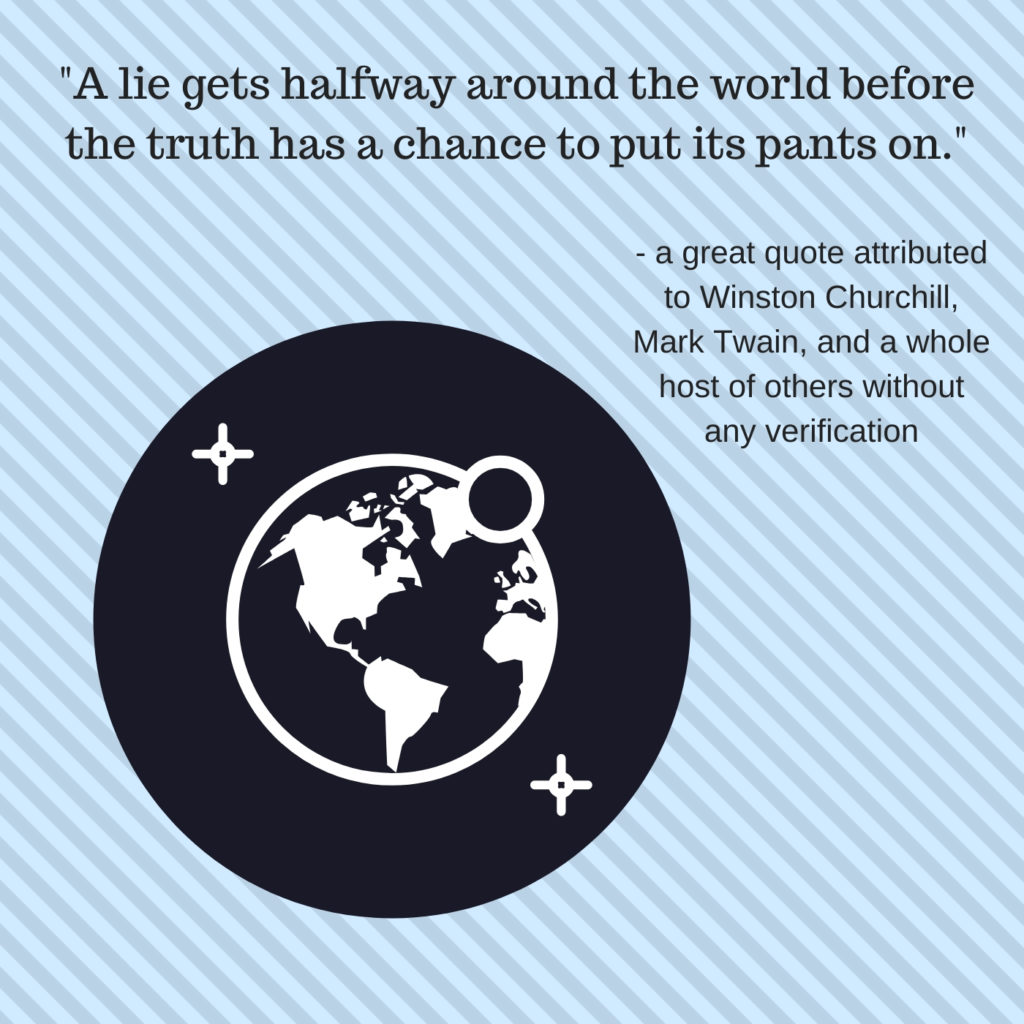 My research mentors drilled into me the importance of verifying information that I put into a profile by checking at least two (and preferably, three) separate sources to fact-check.
My research mentors drilled into me the importance of verifying information that I put into a profile by checking at least two (and preferably, three) separate sources to fact-check.
You might not do that for every single piece of information, depending on the original source, but especially for the things that needed to be right. Address, for example. Spouse and children’s names, for another.
And by verifying the facts, they also meant that if the information was found in three different newspapers, I needed to be careful that it wasn’t one Associated Press report that was simply re-published in three media outlets.
A question came up amongst my team this week that adds another dimension to this verification imperative.
How do you know that you can trust the resource itself? Especially if it’s from a source you’re unfamiliar with, or located in another country?
You certainly don’t want to cite authoritatively from what you later discover to be the Dutch or Japanese or Saudi equivalent to InfoWars, right? If you don’t know the language, and you’re unfamiliar with the culture, honest mistakes can happen, but it’s best to avoid them in the first place.
On the other hand, it’s possible that the resource you cite is fairly reliable, but tends to lean to the left or right politically. That’s not such an issue, but it’s always good to consider the source in your reporting, and to make sure you’re transparent when citing information.
Earlier this week the HBG team shared with each other some of the resources we use to have confidence in the information we’re reporting, and I thought you might be interested to know about them, too.
MediaBias/FactCheck (MBFC) is a free source to check the political slant of US periodicals. Plug in the name of a periodical and Media Bias/Fact Check will tell you if the newspaper or magazine has a left- or right-leaning slant or if it is a questionable resource. As I mentioned, it’s free, so be prepared for an onslaught of ads on the page.
Media Bias Ratings from AllSides is another great resource for checking the bias of over 600 news sources in the United States and around the world. AllSides also provides a homepage with the top stories with links to reporting from the left, center, and right to give everyone an opportunity to step out of their own filter bubble.
Not quite sure what constitutes a bias to the left vs. right? This infographic from Information Is Beautiful simplifies things quite a bit (well, it is an infographic after all), but it’s generally a good overview of the differences in political-spectrum viewpoint.
Want to know more generally about how you can battle the onslaught of fake news? (I don’t mean fake fake news, but real fake news). A joint study by researchers at Dartmouth and the University of Michigan provides several new insights about the most effective ways to counter fake news on social media, and this article by Journalist’s Resource from Nieman Lab describes the results of their research (and several other studies in the same vein) in plain English.
What resources do you use to fact-check the fact-checkers?
